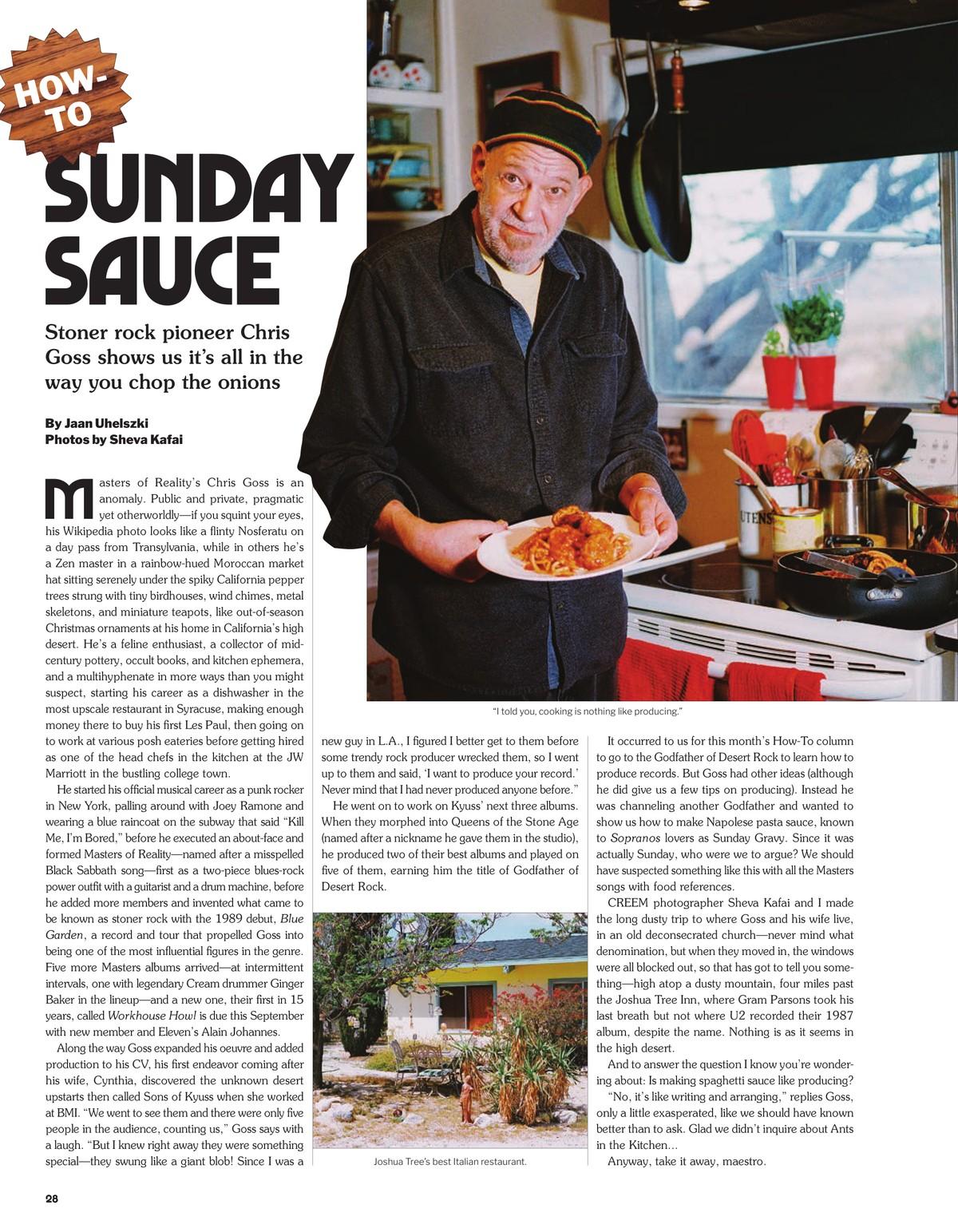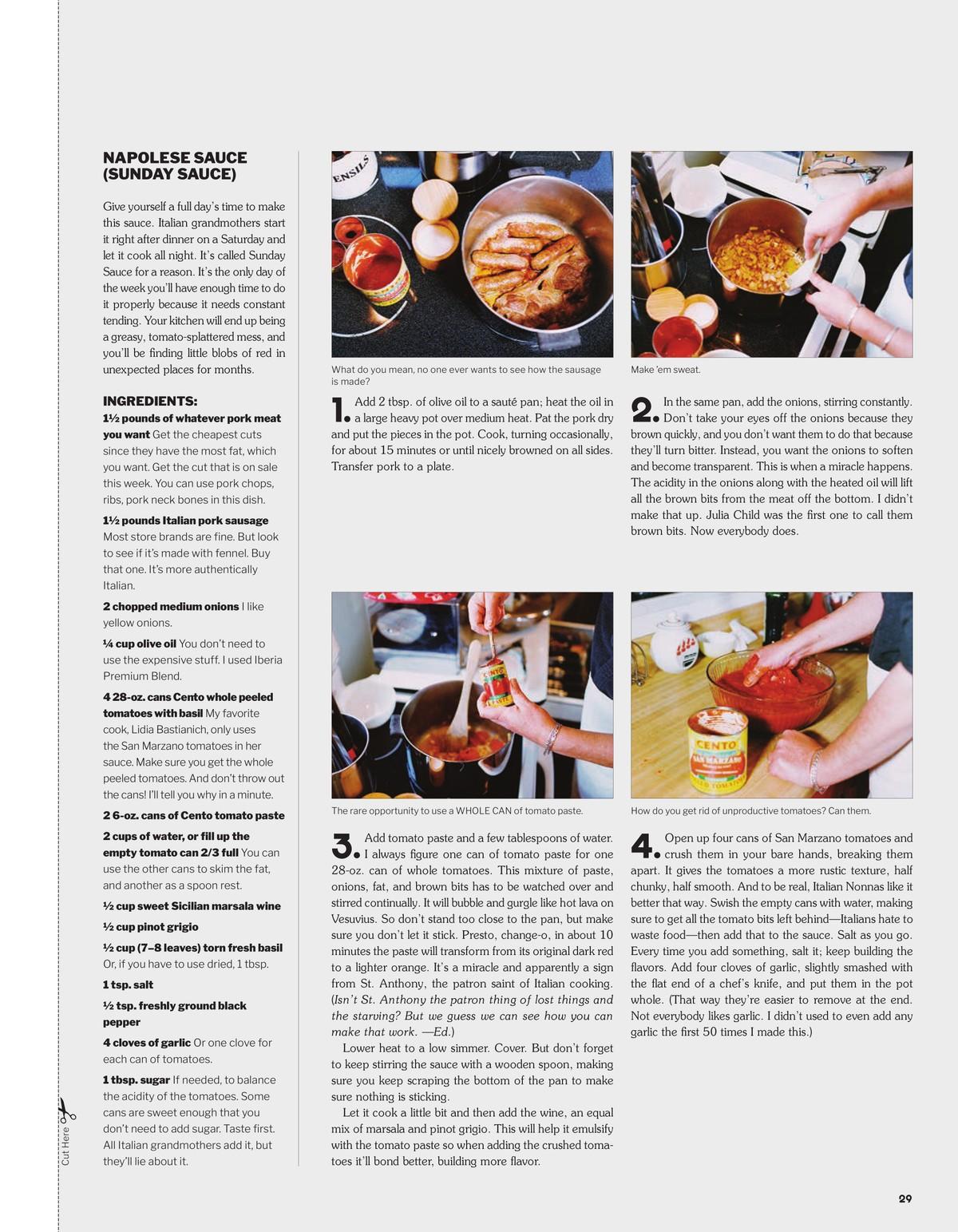SUNDAY SAUCE
Masters of Reality’s Chris Goss is an anomaly. Public and private, pragmatic yet otherworldly—if you squint your eyes, his Wikipedia photo looks like a flinty Nosferatu on a day pass from Transylvania, while in others he’s a Zen master in a rainbow-hued Moroccan market hat sitting serenely under the spiky California pepper trees strung with tiny birdhouses, wind chimes, metal skeletons, and miniature teapots, like out-of-season Christmas ornaments at his home in California’s high desert.


SUNDAY SAUCE
HOW-TO
Stoner rock pioneer Chris Goss shows us it’s all in the way you chop the onions
Jaan Uhelszki
Masters of Reality’s Chris Goss is an anomaly. Public and private, pragmatic yet otherworldly—if you squint your eyes, his Wikipedia photo looks like a flinty Nosferatu on a day pass from Transylvania, while in others he’s a Zen master in a rainbow-hued Moroccan market hat sitting serenely under the spiky California pepper trees strung with tiny birdhouses, wind chimes, metal skeletons, and miniature teapots, like out-of-season Christmas ornaments at his home in California’s high desert. He’s a feline enthusiast, a collector of midcentury pottery, occult books, and kitchen ephemera, and a multihyphenate in more ways than you might suspect, starting his career as a dishwasher in the most upscale restaurant in Syracuse, making enough money there to buy his first Les Paul, then going on to work at various posh eateries before getting hired as one of the head chefs in the kitchen at the JW Marriott in the bustling college town.

